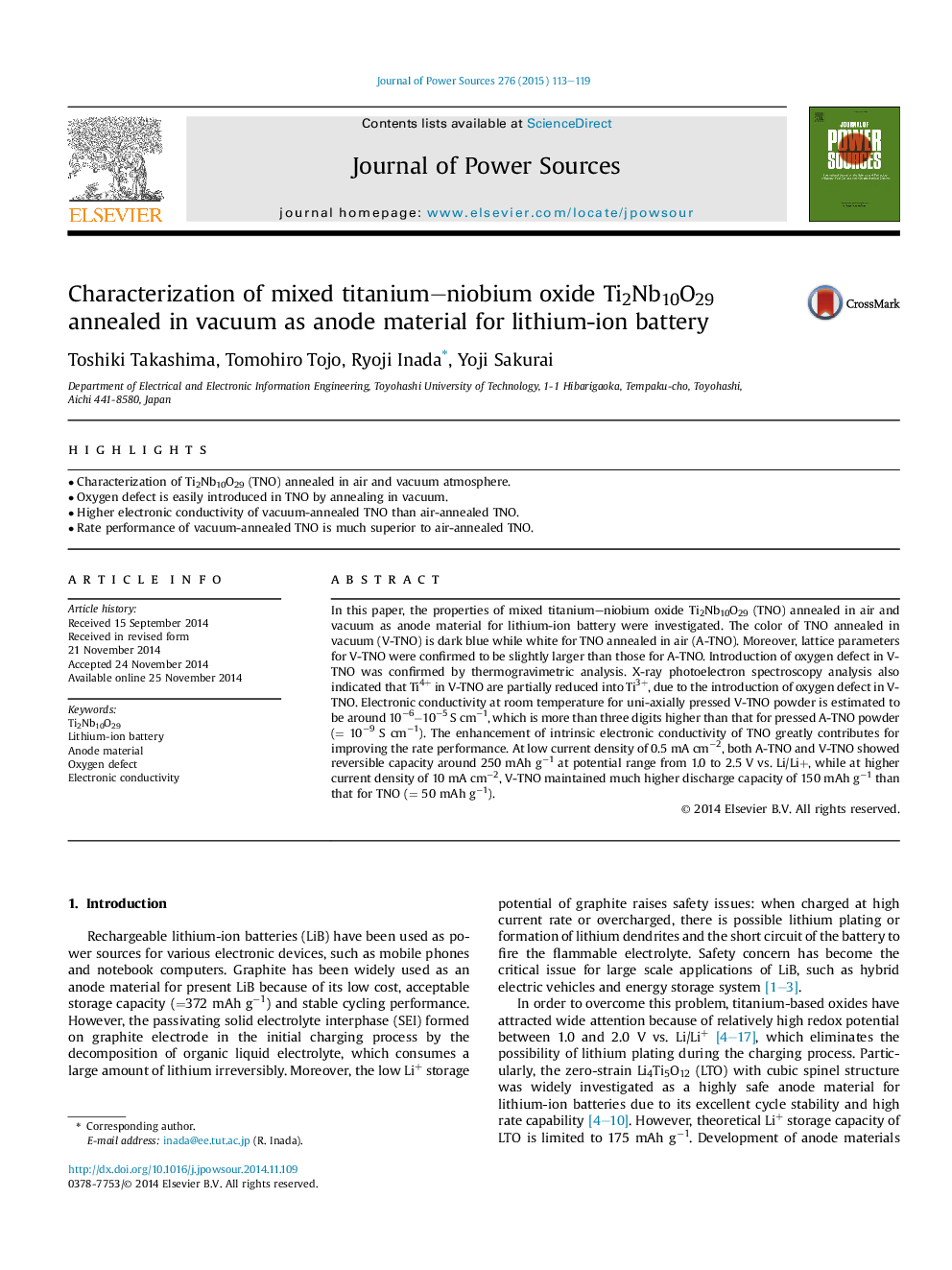| کد مقاله | کد نشریه | سال انتشار | مقاله انگلیسی | نسخه تمام متن |
|---|---|---|---|---|
| 1292924 | 1497956 | 2015 | 7 صفحه PDF | دانلود رایگان |

• Characterization of Ti2Nb10O29 (TNO) annealed in air and vacuum atmosphere.
• Oxygen defect is easily introduced in TNO by annealing in vacuum.
• Higher electronic conductivity of vacuum-annealed TNO than air-annealed TNO.
• Rate performance of vacuum-annealed TNO is much superior to air-annealed TNO.
In this paper, the properties of mixed titanium–niobium oxide Ti2Nb10O29 (TNO) annealed in air and vacuum as anode material for lithium-ion battery were investigated. The color of TNO annealed in vacuum (V-TNO) is dark blue while white for TNO annealed in air (A-TNO). Moreover, lattice parameters for V-TNO were confirmed to be slightly larger than those for A-TNO. Introduction of oxygen defect in V-TNO was confirmed by thermogravimetric analysis. X-ray photoelectron spectroscopy analysis also indicated that Ti4+ in V-TNO are partially reduced into Ti3+, due to the introduction of oxygen defect in V-TNO. Electronic conductivity at room temperature for uni-axially pressed V-TNO powder is estimated to be around 10−6−10−5 S cm−1, which is more than three digits higher than that for pressed A-TNO powder (= 10−9 S cm−1). The enhancement of intrinsic electronic conductivity of TNO greatly contributes for improving the rate performance. At low current density of 0.5 mA cm−2, both A-TNO and V-TNO showed reversible capacity around 250 mAh g−1 at potential range from 1.0 to 2.5 V vs. Li/Li+, while at higher current density of 10 mA cm−2, V-TNO maintained much higher discharge capacity of 150 mAh g−1 than that for TNO (= 50 mAh g−1).
Journal: Journal of Power Sources - Volume 276, 15 February 2015, Pages 113–119